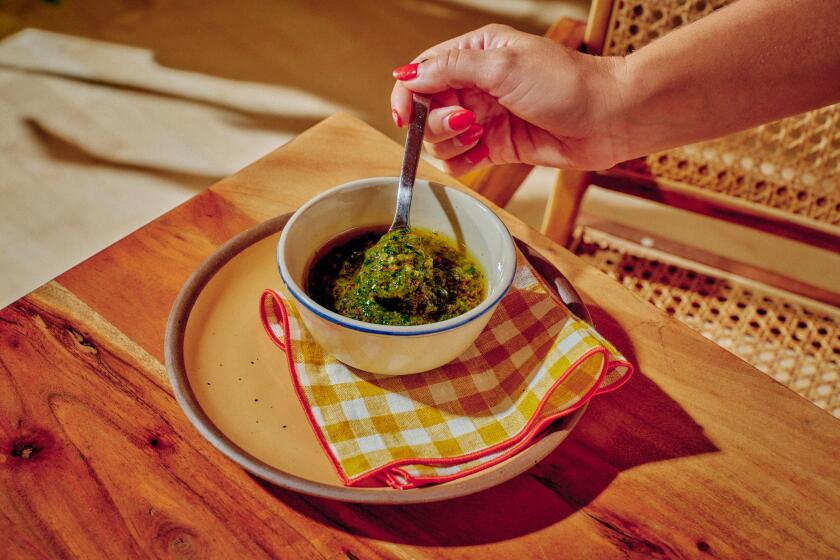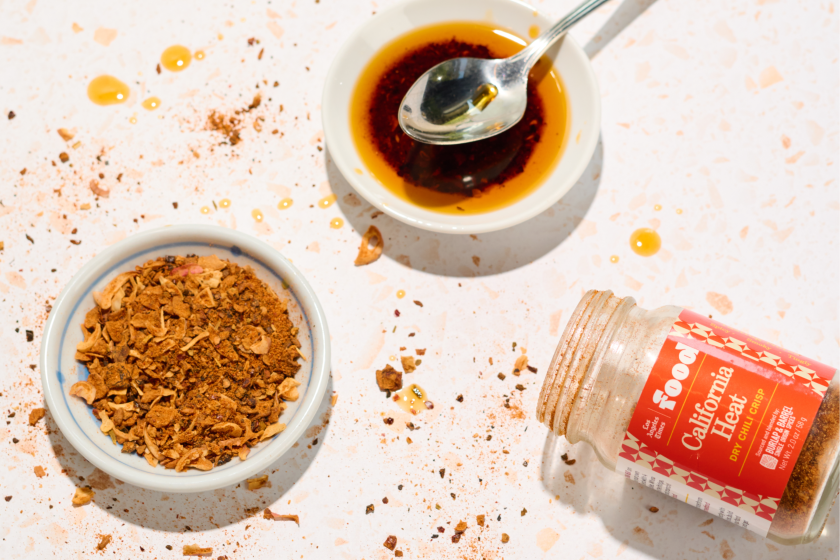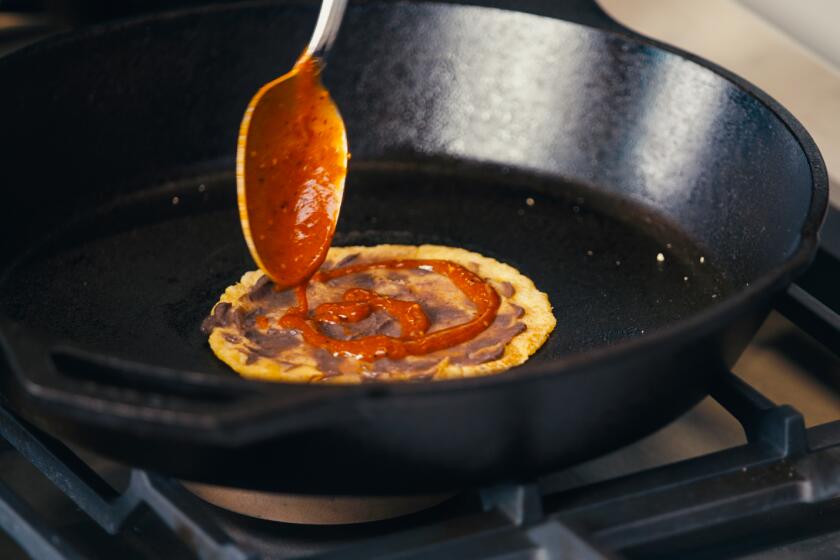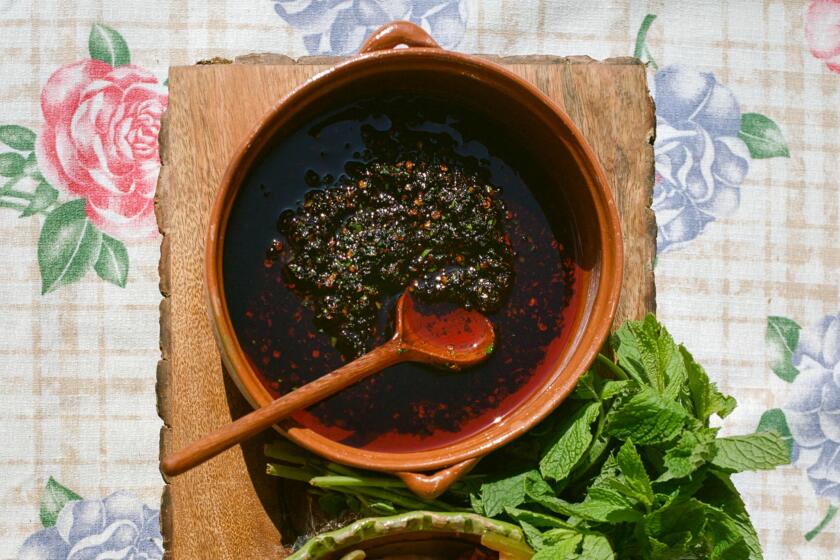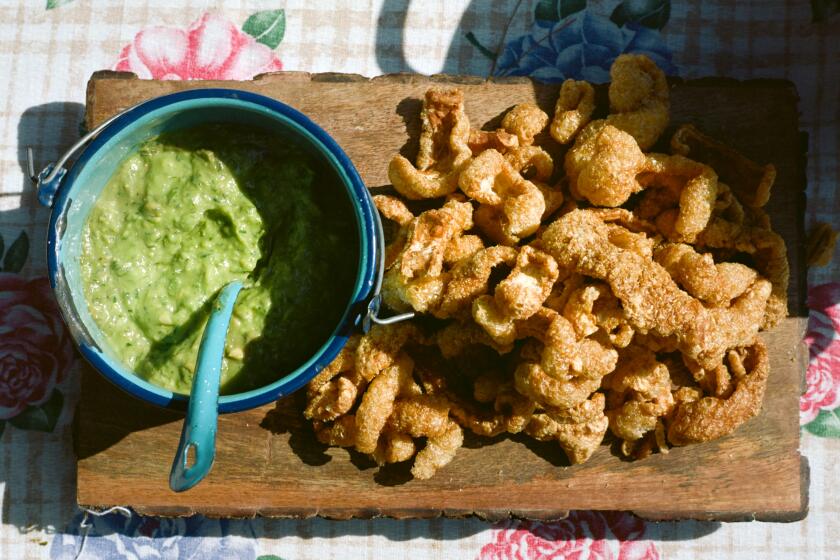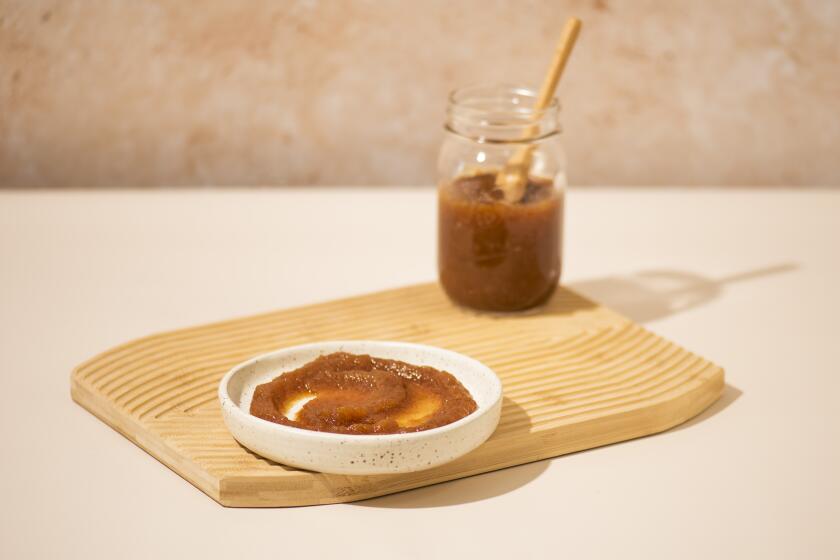Coconut chutney

The dosa is a hugely versatile food. In India, it can be a light snack or a meal in itself. It can be made light and lacy or thick and substantial. It can take a simple five minutes to prepare or a marathon 24 hours. Its batter can be refrigerated for a week and still not lose its taste. And it can be made in a hundred different ways, to suit a hundred different tastes.
All of this I know from personal experience. When I was growing up in India, we used to have the most marvelous summer vacations at my grandparents’ rambling house. It seemed to me that at any given time there were a hundred people there--uncles, aunts, cousins, second cousins, widowed great aunts, neighbors and a stray friend or two.
One of the simplest ways of feeding the tribe was to prepare gallons of dosa batter, with gallons of sambar and coconut chutney to go with it. The dosa batter and chutney would be ground in an oversized version of a stone mortar and pestle. Even simpler was making a dosa that could be eaten with just homemade hot mango or bamboo shoot pickles, or with date syrup or honey.
The women of the house would take turns standing over the hot griddles to keep the dosas coming. The children, once they were done eating, were recruited to yo-yo between the dining table and the kitchen with the fresh batches. That we needed urgent refueling for this arduous task was taken as a given, and a handful of banana chips or a cream of wheat ladoo did absolute wonders to keep up our strength.
The secret of the perfect dosa lies primarily in the making of the batter. The sourdough dosa, which forms the basis for the masala dosa and is probably the most labor-intensive of dosas, is made with rice and the legume urad dal (a kind of black lentil). It has to be blended to the perfect consistency and fermented correctly in order to get it right. The warm weather in south India speeds up the fermentation process, but in more temperate climes, it can take up to 12 hours.
It’s a good idea to prepare a small amount of batter to begin with. Make half a batch to start. But even with a perfect batter, the crispy mile-long masala dosa served in restaurants does take a bit of practice--and griddle space--to achieve.
But don’t worry. You don’t need to make it a mile long. It need not be a perfect circle, and it’s allowed to be more than a millimeter thick--even if you’re not cooking for hundreds of hungry relatives.
Place the water and tamarind paste in a small saucepan and simmer until the paste is softened.
Place the coconut, chile, ginger, chana dal, tamarind paste mixture and salt in a blender container and puree until smooth, about 5 minutes. Transfer to a bowl and set aside.
Heat the oil in a small skillet over medium-high heat to the smoking point and add the mustard seeds. Cover to avoid any oil splatters. After the mustard seeds pop, toss in the curry leaves and cover again, 30 seconds. Remove from the heat and add to the bowl. Mix thoroughly.
Get our Cooking newsletter.
Your roundup of inspiring recipes and kitchen tricks.
You may occasionally receive promotional content from the Los Angeles Times.










